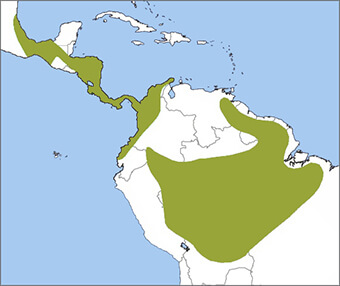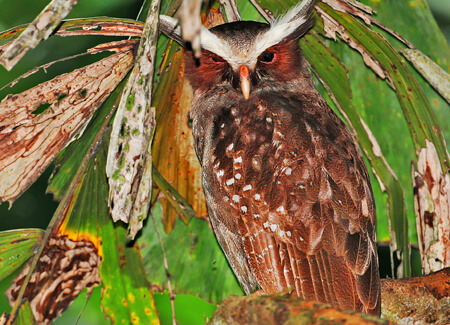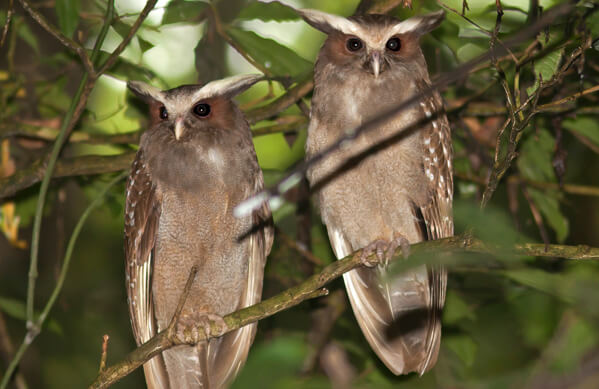 The distinctive Crested Owl, the only member of its genus, has bold white eyebrows that continue into long white ear tufts, giving the bird a severe appearance. Its voice is a deep, frog-like croak, repeated every 5-10 seconds.
The distinctive Crested Owl, the only member of its genus, has bold white eyebrows that continue into long white ear tufts, giving the bird a severe appearance. Its voice is a deep, frog-like croak, repeated every 5-10 seconds.
This species occurs in several areas protected by ABC and in-country partners, including the Osa Peninsula in Costa Rica and the Blue-billed Curassow (El Paujil) Reserve in Colombia. It has also been heard in the Allpahuayo-Mishana National Reserve in Peru, where ABC has supported land acquisition.
Sign up for ABC's eNews to learn how you can help protect birds

Crested Owl by spatuletail, Shutterstock
Like Buff-fronted and Flammulated owls, the Crested Owl nests in tree cavities. Mated owls can often be spotted roosting together in dense vegetation along streams and in forest gaps. This owl is strictly nocturnal and hunts the forest for large insects such as beetles and caterpillars, as well as small vertebrates.
There are two color morphs of Crested Owl: a dark chocolate-brown and a paler rufous-brown. A third, greyish morph is considered to be a subspecies.
In contrast to the rare Long-whiskered Owlet, the Crested Owl has a wide range and is considered fairly common. Still, the species faces threats from habitat loss and deforestation. It is suspected to be declining, and much still remains to be discovered about its true population size and ecology.
Donate to support ABC's conservation mission!



















































